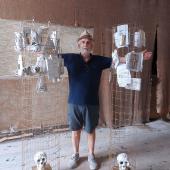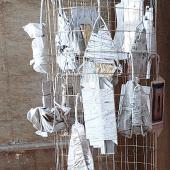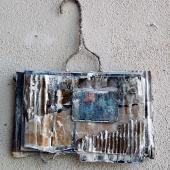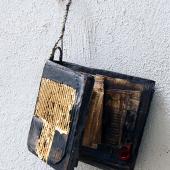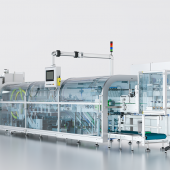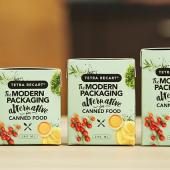Salvatore Anelli, Behind the cover ItaliaImballaggio 03/2024

Maschera con labbra Collage e pittura su carta
Originally from Comiso, in the Municipality of Ragusa, Salvatore Anelli (born 1951) lives and works in Calabria in Rende (CS). His works are featured in public and private museums and collections in Italy and abroad.
His artistic activity is documented in various publications of a general and monographic nature. Among these, we can mention: Arte in Calabria 1960-2000, MAON Ediz. AR&S, Rende, 2005; Specchio alterato (texts by P. Aita) ed. Vertigoarte, Cosenza, 2007; Di catrame di anima (texts by P. Aita, L. M. Patella, P. Ruffilli, A. Basile) ed. Vertigoarte, Cosenza, 2009; Diversa/mente 365+1, di segno - di corpo - di anima (texts and poems by C. Damiani, D. Pieroni, A. Schwarz, E. De Mauro, R. Gramiccia and P. Aita), ed. Rubbettino, Catanzaro, 2013; Trilogia: Le parole valgono, le città valgono e i teschi valgono, ed. Rubbettino, Catanzaro, 2018/19; Memoriae Rugae, ed. Favia, Modugno, 2022; Confine, ed. Printtaly, Bari, 2023.
In the artist’s own words
Empty sculptures or evolving shapes… Reading a good book inspires you to break from the ordinary and, to cite Italo Calvino, like an old train that envelops you in a cloud of steam, art creates sensations of anticipation and uproar; it plays with the profound alchemy of our senses, arousing confusion and benefit.
Calvino’s Invisible Cities take us back to a sort of parallel vision of the world, linked to a dream reality that does not exist but is present in our memory. Likewise, the latest works created for the exhibition at the Quattro Canti, in Palermo, are a journey into a timeless mythology that belongs to us and which mixes utopia and popular suffering; they project us into a “magical place” characterized by images, writings and disturbing accumulations emerging from our daily lives.
The only temporal dimension which really belongs to us and which we can know with certainty is our past […]. The sculptures, in which the voids dominate the solid parts, are a whisper of our being in history, while the cardboard elements, characterised by poor materials, are filled with signs, numerous fragments which, set next to each other, form a mosaic of tiles that are impossible to reorder in our minds but are able, in the space that holds them, to generate feelings and emotions that only art can give us. The ironic and playful designs were conceived during my summer trip to Kaukana, in the Ragusa area; I’ve used poor materials, packaging cardboard, adhesive papers treated mainly with black charcoal and coloured earth, and as the forms gradually defined themselves, in their being, on the material, further reflections came into my mind about our way of living and being in the contemporary world […]. (Salvatore Anelli)
